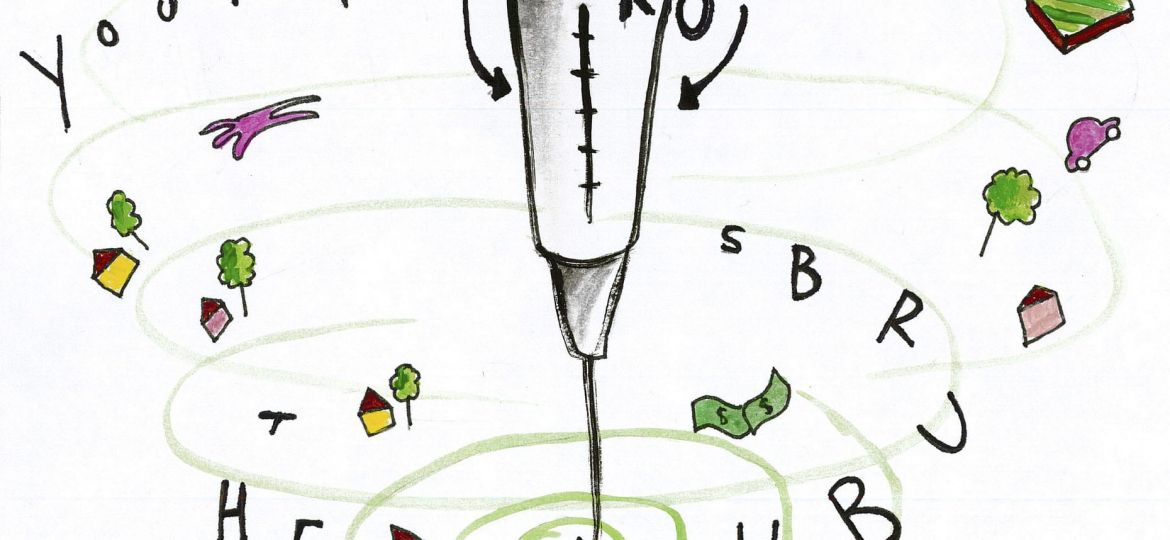
Drug use in America has long been framed as an urban problem, which is a veiled way of calling it a dysfunction of the non-white underclass. Asked to imagine a heroin addict in their minds, I doubt many citizens would conjure up a suburban white person. But they should. The last ten years have seen a massive increase in heroin abuse by white, middle-class Americans. Drug addiction has picked up and moved to the suburbs.
I saw this dynamic firsthand this past summer, working at a public health non-profit in Minneapolis. Once a week, I would spend the afternoon working in the organization’s needle exchange. For the uninitiated, needle exchanges are exactly what they sound like: injection drug users exchange their used needles for clean ones. No cost, no judgment and no questions asked.
Immediately, I noticed two things. First, that heroin was by far the most popular drug. And second, many heroin users did not fit any of my preconceptions. Many appeared relatively affluent, not easily identifiable as addicts. More to the point: they were white.
Statistics confirm my observations. A recent report by the Center for Disease Control and Prevention (CDC) found that heroin use among all non-white Americans fell 15 percent between 2002 and 2013. It rose 114 percent for whites. Deaths from opioid overdoses have quadrupled since 2000, and now kill more people per day than car crashes. Heroin is epidemic.
And the response to all of this? It’s been different, to say the least. Let’s recall the last American drug epidemic of this proportion: crack cocaine in the 1980s. Police departments and the federal government responded with the infamous “war on drugs,” resulting in mass incarceration of predominantly low-income blacks, harsh sentencing guidelines and a general sense that drug addicts were criminals.
Fast forward to today: similar widespread use of an illegal and widely condemned substance. But there are no mass arrests in Edina, no wave of stiff, unforgiving prison sentences in St. Louis Park. Rather, a national movement for kinder, gentler sentencing laws has emerged over the last several years. Presidential candidates like Hillary Clinton, Jeb Bush and Chris Christie have stated publically that courts should emphasize treatment over jail time for heroin users.
Even police departments are changing their ways. A recent New York Times article on heroin use among whites reports that nearly 40 local police departments around the country implemented new policies that don’t charge heroin users who ask police for help, even if the individual has the drug on their person. Instead, police direct the users to drug treatment programs.
It all depends who is shooting up. Suddenly, it’s the sons and daughters of white Americans. When asked to picture an injection drug user, they used to imagine a brown-skinned person living in a big city. Now they picture their children and neighbors.
And when well-off suburban whites want something, they often get it. They organize lobbying groups and PACs, call their representatives and form community organizations. They have money, which means they have power. It’s a sad commentary on the state of American democracy and racial dynamics that positive policy change for non-whites only occurs when it intersects with the interests of wealthy Caucasians.
Don’t get me wrong; drug-sentencing laws in this country are draconian, wrong-headed, cruel and do absolutely nothing to help the drug user recover. Addiction is a disease, not a crime. Drug addicts need care, not incarceration. This movement has encouraged a more reasonable response to addiction, and I suppose we should welcome progress whenever it appears. It is a welcome step, a step towards kindness – one we should all endorse. But it’s disgraceful that this change occurred only after heroin needles began leaving their scars on white suburban forearms.
Nick Bowlin ’16 (bowlin@stolaf.edu) is from Princeton, N.J. He majors in political science.

